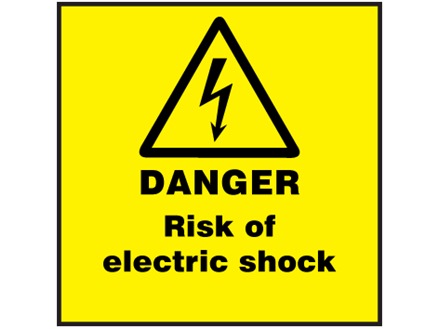Electrical Shock
The human body conducts electricity. Even low currents may cause severe health effects. Spasms, burns, muscle paralysis, or death can result, depending on the amount of the current flowing through the body, the route it takes, and the duration of exposure.
The main factor for determining the severity of an electric shock is the amount of electric current that passes through the body.
The amount of voltage that is dangerous to life varies with each individual because of differences in body resistance and heart conditions. Generally, any voltage above 30 V is considered dangerous.
Typical body resistance values are:
• Dry skin—100,000 to 600,000 Ω
• Wet skin—1,000 Ω
• Internal body (hand to foot)—400 to 600 Ω
• Ear to ear—100 Ω
If you came into direct contact with 120 volts and your body resistance was 100,000, then the current that would
flow would be:
I = 120 V / 100,000 Ω = 0.0012 A = 1.2 mA (0.0012 × 1,000)
If you were sweaty and barefoot, then your resistance to ground might be as low as 1,000 ohms. Then the current would be:
I = 120 V/1,000 Ω = 0.12 A = 120 mA
This is a lethal shock, capable of producing ventricular fibrillation (rapid irregular contractions of the heart) and death!

If a person does suffer a severe shock, it is important to free the victim from the current as quickly as can be done safely. Do not touch the person until the electric power is turned off. You cannot help by becoming a second victim. The victim should be attended to immediately by a person trained in CPR (cardiopulmonary resuscitation).
Sources: Electric Motors and Control Systems-Frank D. Petruzella
Complementary video

